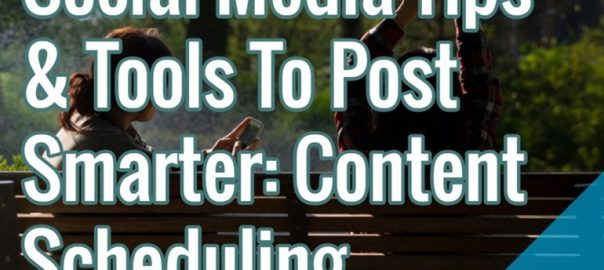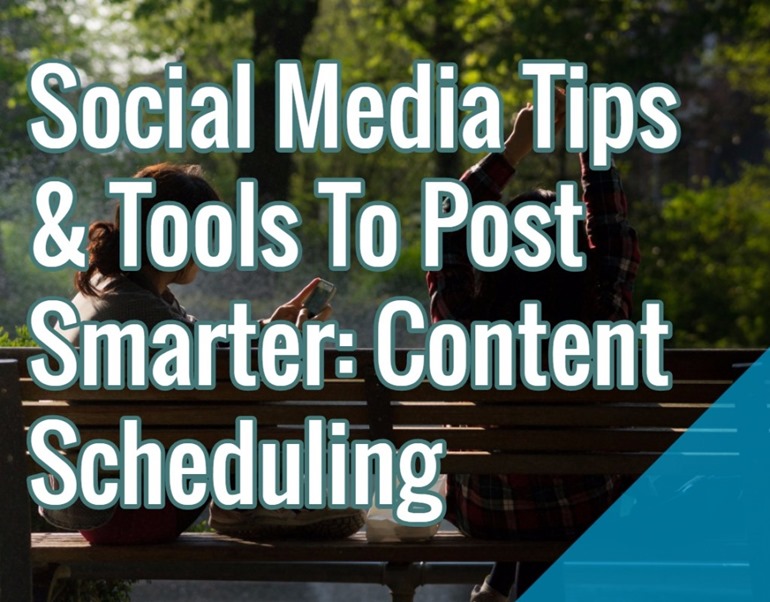Last post we spoke about different content types, content creation, and the benefits of repurposing content. We are at the end of this three part series and I’d like to drive home the benefits of editorial calendars and content scheduling.
In this post you’ll learn about:
- The benefits of editorial calendars and content scheduling
- What an editorial calendar looks like
- How to analyze your efforts
- And the tools to help make it easier
Calendars & Scheduling
To start, it helps to have a calendar and utilize scheduling for a number of reasons.
The obvious is that it’s always good to be organized. If you fly by the seat of your pants, your posts likely won’t be a fair mix of information. Instead, they’ll be heavily weighted on whatever is happening that week.
In our first post we spoke about how to generate content ideas. When you get those ideas, take and put them into a calendar. This could be monthly, or annual – whatever is most manageable for you – as long as you have a plan. That way, you can accommodate numerous topics of importance, and make sure that nothing is slipping through the cracks. Editorial calendars ensure consistent posting.
Being communications professionals, we know that sometimes our days don’t go as planned. Having an editorial calendar with posts that are prescheduled ensures that your accounts aren’t neglected and there is still activity if you are short on time dealing with more urgent matters. It gives you a piece of mind knowing things are still running on auto pilot even if you’re not there to hit send.
If there are specific events or programs/courses specific to your organization, editorial calendars can help develop a strategic plan. By planning out topics weeks or months in advance, you can align content with milestones for your organization. This will enable you to create relevant content and publish it on time.
Editorial calendars also provide an archive of posts. If you aren’t tracking what you’re writing about, you run the risk of duplicating topics. Having copies of past calendars on file creates an inventory of previously chosen topics. This doubles in value as it will also help you identify opportunities for content re-purposing to get the most out of your work. It’s also helpful if you need to prove promotion to your boss or another stakeholder.
So what does an editorial calendar look like? Well, there are many templates out there that you can use. The way we break down our calendars is by identifying the date, platform, content type, messaging, any associated images, and links. The different types of content we share are reminders about events or dates, tips as they relate to our industry, informational posts, videos, and so on.
Now, the best thing about social media is that you can schedule posts in advance. Let’s look at some of the programs that will help you maximize your time.
Hootsuite is the most popular social media management tool for multiple networks like Facebook, Twitter, Instagram and LinkedIn, from one web-based dashboard. They offer free and paid solutions for managing unlimited social profiles, enhanced analytics, advanced message scheduling, and Google integration.
Other platforms include Sproutsocial, Buffer, SocialOomph, and Tweetdeck. All of these platforms are similar to each other, but have varying dashboards and analytical reports. There are a number of blogs that evaluate the pros and cons of each so I encourage you to do some shopping around to find one that’s right for you.
Measuring Results
How do you measure your success if you aren’t tracking your results?
I’ve seen a number of business owners stumped by the spikes and dips in their monthly website visits, because they weren’t tracking their initiatives. Ensure you are using Google Analytics to see what sources are driving visitors to your site. Having an editorial calendar can help you to identify what content is driving engagement. Use this information to develop content pieces in the future.
If you haven’t caught on yet, great content is essential to succeeding at social media. Your plan should include content curation and creation, and the last piece is an editorial calendar to keep you on track. A good rule is the rule of thirds for your calendar.
- 1/3 of your social content should promote your organization.
- 1/3 of your content should share ideas and stories from within your industry or like-minded educational institutions
- 1/3 of your social content should be about personal interactions and building your sense of community.
Once you have your posts scheduled, I would encourage you to monitor your accounts as often as possible. Monthly reporting is a good idea but in general you should be checking your accounts daily to monitor and respond. There are a few key metrics that are crucial to evaluating the success of your strategies and they include:
- The amount of Followers/Page Likes your account has. This is the number of unique people who are interested in receiving direct update from you.
Post Reach, which is the number of unique people who have seen any content associated with your accounts. Pay attention to the content you push out and the engagement rates. Posts with images, links, and hashtags typically perform better than those without.
Engagement. This is what you really want to pay attention to because it’s the number of unique people who have clicked, Liked, commented on, or shared your posts.
- Acquisition/Refferal Sources: This is something you can look at using Google Analytics. Acquisition or referral source will tell you how many people have visited your site from social media. This is a direct indicator of how much traffic and promotion your social networks are providing and their value.
Programs like Hootsuite and Sproutsocial do have reporting features so you don’t have to collect the information manually and it makes reporting and analysis easier.
Resources
Finally, there are great blogs on the web that are terrific resources for marketing professionals, they are:
All of these blogs have free templates and ebook downloads, workbooks, and calendars available for you and I strongly urge you to continue your professional development by checking these sites out, I know they’ve really helped me along the way.
Thanks for following along. I hope you’ve learned a bit beyond the basics and that this information will help you evolve your own social media strategies.
Hand-Picked Related Articles:
- 12 Months Of Content Event Triggers For Your Editorial Calendar
- How To Auto-Post To Social Networks From WordPress
- Bulletproof Your Social Media Strategy By Following This Framework
* Adapted lead image: ![]() Public Domain, pixabay.com via getstencil.com
Public Domain, pixabay.com via getstencil.com
Social Media Tips & Tools To Post Smarter: Content Scheduling
The post Social Media Tips & Tools To Post Smarter: Content Scheduling appeared first on Search Engine People Blog.
Search Engine People Blog(76)
Report Post









